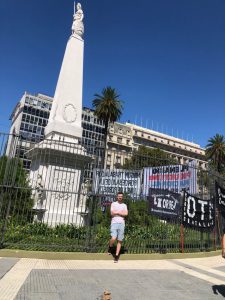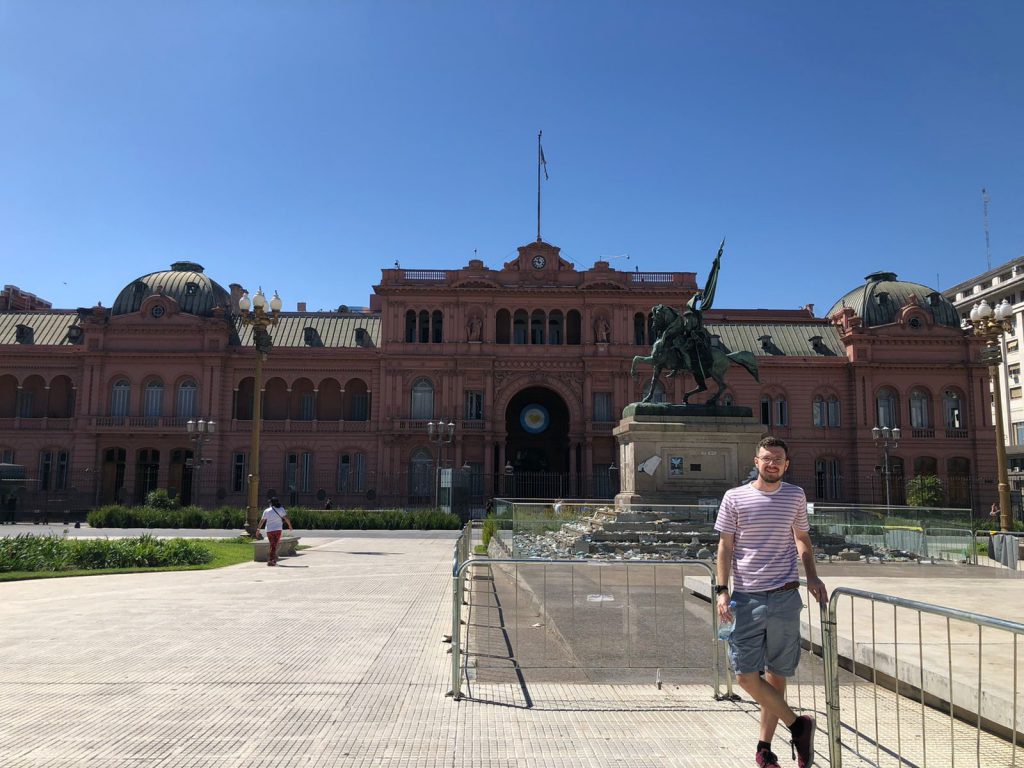Pieter William Green
AIFS
Buenos Aires, Argentina
Spring 2022
¡Hola Todos!
That means “Hello everyone!”
My name is Pieter Green, and I am a part of the class of 2023. I am studying abroad in Buenos Aires, Argentina this semester and I am going to be detailing my escapades in the country over the next several weeks.
Along with sharing my adventures in Latin America to the H-SC community, I aim to convey a certain theme to my readers that can only be done by living here: I want to share with the brotherhood what it means to live the Latin American Experience. My objective is to provide insight into how our Hispanic neighbors relate to the Americana lifestyle and how their struggles and successes map onto ours. This will be my 4th time living in Buenos Aires, so I hope I can properly express why this city, this country, and this part of the world are so valuable to know.
This week I visited the cultural center point of Buenos Aires, the Plaza de Mayo. The plaza had many previous iterations such as the Plaza de Armas and the Plaza de Victoria, but it garnered its current moniker with the establishment of the May Pyramid in 1811 to memorialize the beginning of the independence movement of the Rio de la Plata from the Spanish monarchy.

May Pyramid
Due to its commemoration of the city’s independence, the pyramid made the plaza the quintessential place for progressive movements and protests. The day I visited the plaza was a very active one as posters and banners adorned the fencing of the obelisk.
Of these progressive movements, the most famous is the Mothers of the Plaza de Mayo, a human rights organization originally dedicated to demanding repercussions for the actions of the Argentine military junta during the 1980s. Every Thursday at 3:30 p.m., members march around the May Pyramid and then discuss current events both internationally and globally.
Bordering the Eastern side of the plaza is the office of the Argentine president, also known as the Casa Rosada. Unlike the White House, the Argentine president does not reside in the Casa Rosada and merely commutes to work there. The pink coloration of the structure supposedly represents a compromise between the two leading political factions during the building’s inception as their colors were red and white.

Casa Rosada
Within these two structures lies a theme of contention which is pivotal to understanding the Latin American Experience. Unlike the USA, almost every Latin American country has gone through several forms of government as a result of conflicts of power. Argentina is a country of clashes, and it shows its scars as emblems of perseverance.
Thank you for reading the first installment of my blog series!
Hasta luego,
Pieter Green